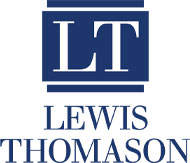If you make it through your workday without checking any social media, pat yourself on the back. You are in the distinct minority.
Recent surveys show that 77 percent of employees access social media during normal work hours. Compare that to the fact that only 67 percent of employees drink coffee during work hours, and you quickly realize that “social media breaks” may have replaced “coffee breaks” in the “workplace distractions” category.
But social media is more than a workplace distraction. It can also be the source of workplace strife. Pew research suggests that 16 percent of workers have found information on social media that impacted their professional relationship with a colleague, and 24 percent have written a negative post about their employer.
Employers are struggling to navigate the legal issues born from the union between employment law and a social media culture. The Society for Human Resources Management recently reported that only 40 percent of organizations have a formal social media policy. Perhaps that is because the National Labor Relations Board has been quick to ding employers for “bad” policies but has been slow to define a “good” policy.
Recently, however, the NLRB issued a new guidance regarding handbooks. The new rules are particularly useful for employers attempting to craft social media policies.
NLRB’s categories of rules
The board’s guidance denotes three categories of rules. The first category includes handbook provisions the board has deemed presumptively lawful. Examples of permissible provisions include:
- Prohibitions on use of the company’s logo, graphics or trademark without prior written approval;
- Prohibitions on employees making comments on behalf of the company without prior written approval;
- Prohibitions on employees disparaging other employees; and
- Prohibitions on disclosure of company’s confidential, proprietary or trade secret information (note that the board requires the employer to narrowly define terms like “confidential information”).
Rules banning harassment, bullying and threats of violence can be incorporated into a social media policy, provided that the policy provides sufficient context and definitions.
The board’s guidance also identifies a second category of rules, which would warrant individualized scrutiny, and a third category, which are presumptively unlawful. Employers are wise to stay away from these policy provisions. Examples include:
- Blanket rules prohibiting employees from making disparaging remarks or criticizing the employer;
- Blanket rules requiring employees to keep wage, benefits or working conditions confidential; and
- Blanket rules prohibiting employees from making false or inaccurate statements (although the guidance suggests employers may be able to ban “defamatory statements”).
Condemning vague policies
The NLRB also presumptively condemns polices that they deem too vague or ambiguous.
Most employers are really looking for a way to take action against the employee who posts a Facebook rant disparaging the very company writing his paycheck.
So employers are wise to consult with counsel before implementing a social media policy. We can reminisce about “the good ol” days” when employee rants took place at the water cooler or during the coffee break. See the article in the Knoxville Sentinel Business Section.
Janet Hayes, Shareholder in the Knoxville office, is an advocate for employers and businesses across the state. Her practice is focused on employment and appellate law.





